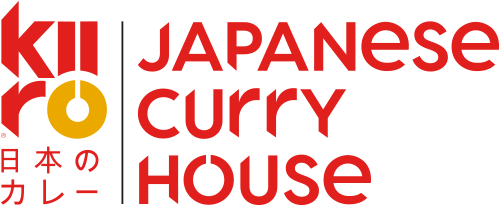let us help you
faq
questions & answers
私達について
Japanese curry? Never heard of it…
No, isn’t that funny? While in Japan they eat curry more often than sushi. And curry there is just as popular as ramen. Every region in Japan has its own version, in Japanese homes curry is on the menu at least once a week, marines eat curry every Friday, and it is the favourite lunch of Japanese school children. Curry is actually the national dish of Japan. Like split pea soup in Holland, pizza in Italy or couscous in Morocco.
Is curry Japanese?
Japanese curry originated in India, and has arrived in Japan by way of England. They call it “kare” in Japan (with a rolling “r”), which comes from the English word curry. At the end of 1800s, a Japanese fishing boat picked up an English castaway with a pan of curry on board, and since that day everyone has been eating curry in Japan. So much for the legend. The real story is that Indian curry was eaten weekly by the British Royal Navy in the 19th century, somewhat adapted to British taste. India was an English colony at the time, that’s why. The British army was a great example for the Japanese army, and the curry tradition was adopted. And the curry was again adapted a little, this time to the Japanese taste: sweeter and smoother.
What is Japanese curry?
The basis of Japanese curry is a vegetable broth. It is thickened with a roux, an invention from French cuisine, which consists of butter and flour. Spices are added to the roux: cumin, coriander, turmeric and fenugreek. And almost always potato, carrot and onion. You serve that sauce, which is the actual curry, with rice. Japanese curry can be sweet and mild, or savoury and spicy. And everything in between. The most traditional curries are served with beef or a breaded piece of pork or chicken on top. They call that “katsu” in Japan. There are other, more modern varieties with prawns, tofu or meatballs.
How does it work in a Japanese Curryhouse?
First you choose the base, which is the same with every plate of curry, and consists of thickened sauce, the basic curry. Then you choose a protein, like chicken, pork, beef, prawns or tofu. And extra vegetables, if you want: carrot, potato (sweet or regular), beans, pumpkin or mushrooms. You can also choose how sweet and how spicy you want your curry to be. And if you want an extra topping, such as crunchy garlic or onion, grated cheese or kim-chi. Each curry is therefore customized, but you can also choose one of the classics that we have already put together for you. Easy peasy Japanesey.
What about vegetarians?
Vegetarians are good with Japanese curry. Real good. The basic curry is always made from a 100% vegetable broth, made of carrot, onion, Chinese cabbage and celery. You can then add tofu, vegetarian chicken or even vegetarian katsu (tadááá!). And one or more of the seven different veggies. All toppings are also vegetarian by the way, from the pickle to the edamame.
What does Kiiro mean?
Yellow. Kiiro means yellow. Ki is yellow in Japanese, and iro colour. Yellow is the colour of the most important raw material for curry, turmeric. It is made from the yellow root of a plant. Turmeric contains curcumine, which is a kind of super food. Black pepper, which is also present in all Kiiro curries, ensures that your body absorbs the curcumine better. The effects of curcumine vary from improving your memory and (not unimportant) your mood, to preventing wrinkles. Just Google them, the health benefits of turmeric. You’ll be surprised.
Where do you eat Japanese curry?
At Kiiro. Or at home. Or at work, or in the park or at school or wherever you want. Eat in or take out, or have it delivered. Just like in Japan. There they eat it at home, at work or at school, but also in a restaurant. From simple wooden eateries with lanterns of rice paper to fancy high-end places. You can buy 300 types of curry in a well-stocked food department of a department store. From traditional (old-fashioned navy style) to the secret recipes of Michelin starred restaurants, with wagyu beef or scallops.
Do they only eat Japanese curry in Japan?
Fortunately not. They have been eating it over there for over 100 years, in all walks of life, in all seasons. Only in the last couple of years has Japanese curry really made its way to the rest of the world. After sushi, ramen and poké bowls, Japanese curry is now becoming a worldwide trend. You can eat Japanese curry in London, Los Angeles, New York and now Rotterdam.
Does everyone like Japanese curry?
Yes. Literally almost everyone. It’s kind of strange, but it actually tastes like something you already know, but have never eaten before. Japanese curry has something familiar. It is comfort food. Simple. Easy. And: you will not easily get tired of it. We tried to calculate how many combinations are possible with the Kiiro menu, but when more than 3 zeros appeared, we quickly stopped. Because you can customize every plate of curry, you only eat what you like. Happy curry!


